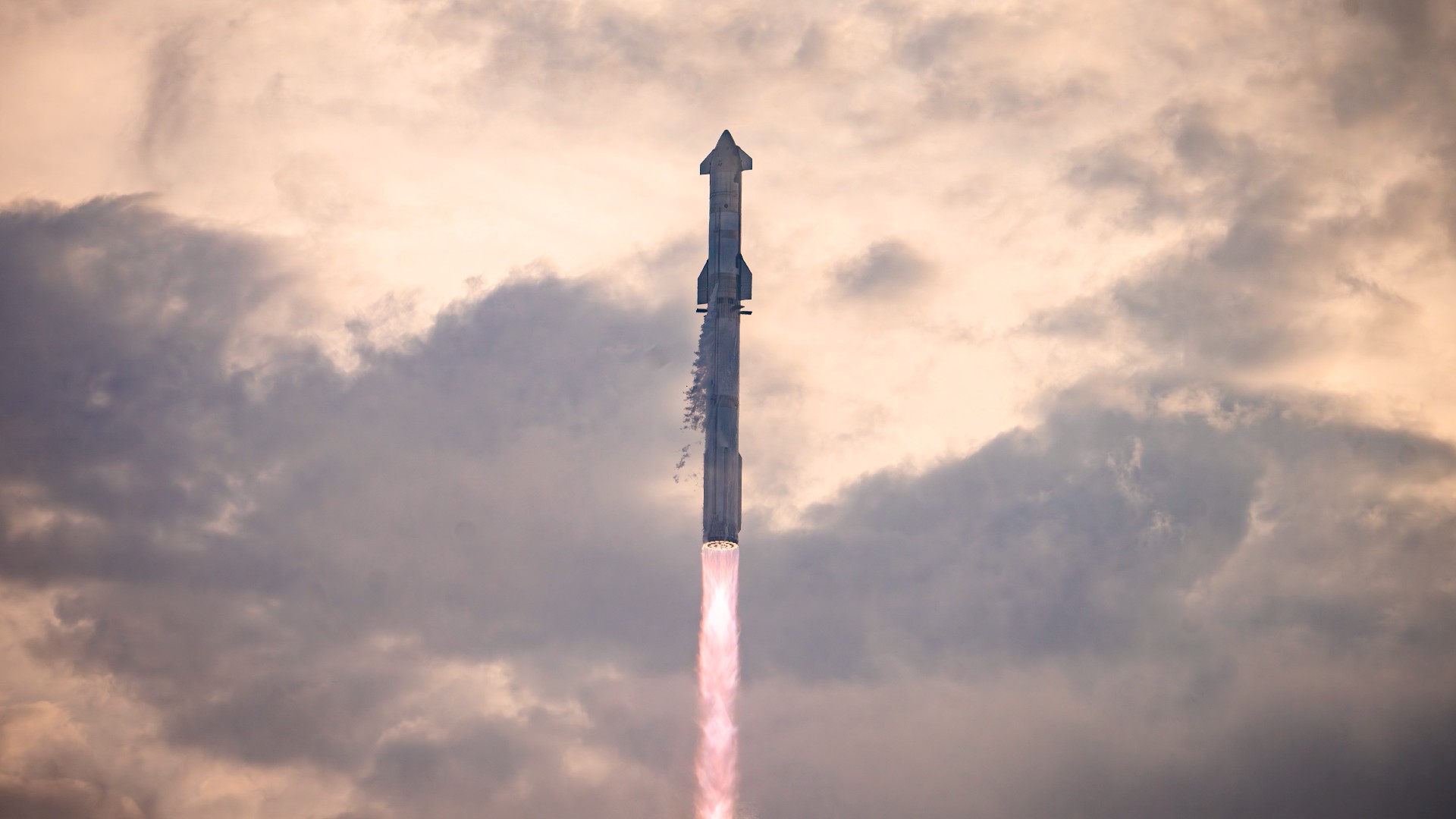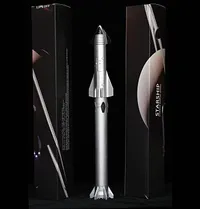SpaceX's Starship will go interstellar someday, Elon Musk says

SpaceX's Starship megarocket could eventually live up to its bold name.
A future iteration of Starship, which conducted its third-ever test flight last week, will go interstellar, according to SpaceX founder and CEO Elon Musk.
"This Starship is designed to traverse our entire solar system and beyond to the cloud of objects surrounding us. A future Starship, much larger and more advanced, will travel to other star systems," Musk said via X early Monday morning (March 18).
Related: Relive SpaceX Starship's 3rd flight test in breathtaking photos
Starship consists of two stainless-steel elements: a huge first-stage booster called Super Heavy and a 165-foot-tall (50 meters) upper-stage spacecraft known as Starship, or just Ship.
Both of these vehicles are designed to be fully and rapidly reusable, and both are powered by SpaceX's next-gen Raptor engine — 33 for Super Heavy and six for Ship.
When stacked, Starship stands about 400 feet (122 m) tall. It's the biggest and most powerful rocket ever built, capable of carrying up to 165 tons (150 metric tons) to Earth orbit in its reusable configuration. For comparison, SpaceX's workhorse Falcon 9 rocket has a maximum payload capacity of about 25 tons (23 metric tons).
Breaking space news, the latest updates on rocket launches, skywatching events and more!
Starship performed quite well on last week's test flight, making serious progress compared to its first two jaunts, which occurred in April and November of last year. For example, the first test mission lasted just four minutes and the second ended about eight minutes after launch. But Thursday's (March 14) flight lasted about 50 minutes, ending when the Ship broke apart during its reentry to Earth's atmosphere.
Starship Die Cast Rocket Model Now $69.99 on Amazon.
If you can't see SpaceX's Starship in person, you can score a model of your own. Standing at 13.77 inches (35 cm), this is a 1:375 ratio of SpaceX's Starship as a desktop model. The materials here are alloy steel and it weighs just 225g.
Note: Stock is low so you'll have to act quickly to get this.
SpaceX sees Starship helping humanity settle the moon and Mars. NASA buys into this vision: The agency selected Starship to be the first crewed lunar lander for its Artemis program. If all goes according to plan, Starship will put astronauts down on the moon for the first time on the Artemis 3 mission, which is tentatively scheduled to lift off in September 2026.
A lot more work, and many more test flights, will be needed to get Starship ready to carry astronauts in deep space. And getting an interstellar version up and running will require a far bigger leap — one that it's tough to imagine today.
Humanity is nowhere near developing a spacecraft that can travel between the stars on a reasonable timescale; the distances are just so intimidatingly huge. For example, the nearest star to our sun, the red dwarf Proxima Centauri, lies 4.2 light-years away. That's about 25 trillion miles (40 trillion kilometers). It would take a probe powered by conventional rocket propulsion tens of thousands of years to cover that exotic ground.
Researchers have ideas about how to make the journey more feasible. The Breakthrough Starshot initiative, for instance, is working on a system that would accelerate sailcraft to 20% the speed of light using super-powerful ground-based lasers. Such vehicles could reach Proxima Centauri just 20 years or so after liftoff, if everything works out.
That's a very big "if." And the Breakthrough Starshot craft would be tiny, with bodies about the size of a postage stamp. Developing an interstellar craft big enough to carry people would be a much taller order.
That's apparently what Musk has in mind, given that this future interstellar Starship will be "much larger" than the current behemoth. You and I probably won't be around to see that future craft fly, if it ever does; Breakthrough Starshot, which was announced in 2016, has been eyeing a possible debut launch in the 2030s or 2040s, and even that timeline may be ambitious.

Michael Wall is a Senior Space Writer with Space.com and joined the team in 2010. He primarily covers exoplanets, spaceflight and military space, but has been known to dabble in the space art beat. His book about the search for alien life, "Out There," was published on Nov. 13, 2018. Before becoming a science writer, Michael worked as a herpetologist and wildlife biologist. He has a Ph.D. in evolutionary biology from the University of Sydney, Australia, a bachelor's degree from the University of Arizona, and a graduate certificate in science writing from the University of California, Santa Cruz. To find out what his latest project is, you can follow Michael on Twitter.

